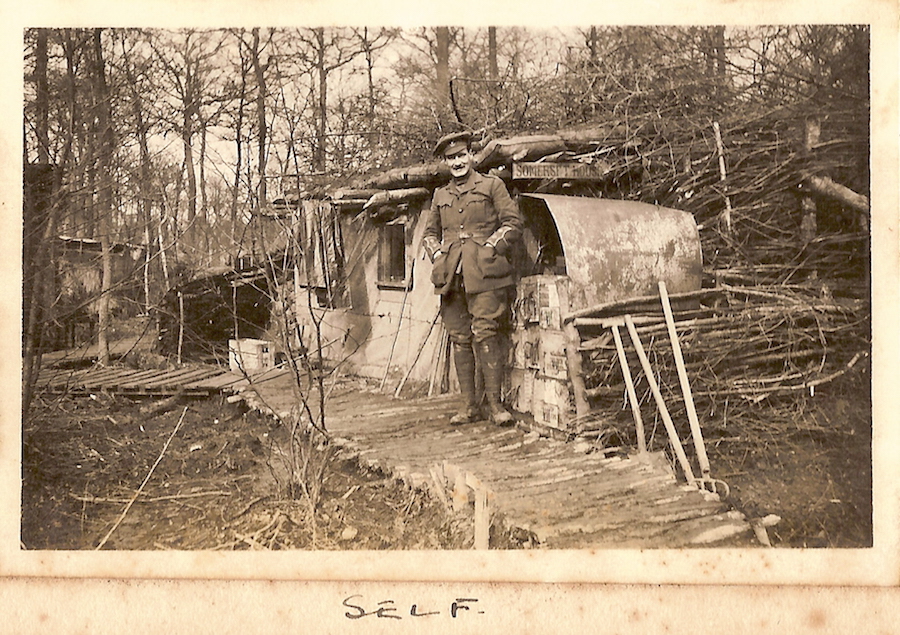Soldier’s photos show life on First World War front line
Captain Robert Harley Egerton Bennett took a series of photographs in Ypres between late 1914 and early 1915
A remarkable set of photographs taken by a First World War hero have been revealed for the first time – 104 years after he brought his camera to the battlefields of Ypres.
Captain Robert Bennett, known as Bob, used his Vest Pocket Kodak to document life on the front line from October 1914 to January 1915.
He embarked for France at the very beginning of the conflict aged 25, serving as a machine gunner in 1st Battalion, the Somerset Light Infantry.
Capt Bennett photographed the muddy, snowy and flooded fields endured by soldiers, as well as his fellow men building fortifications and using anti-aircraft guns.
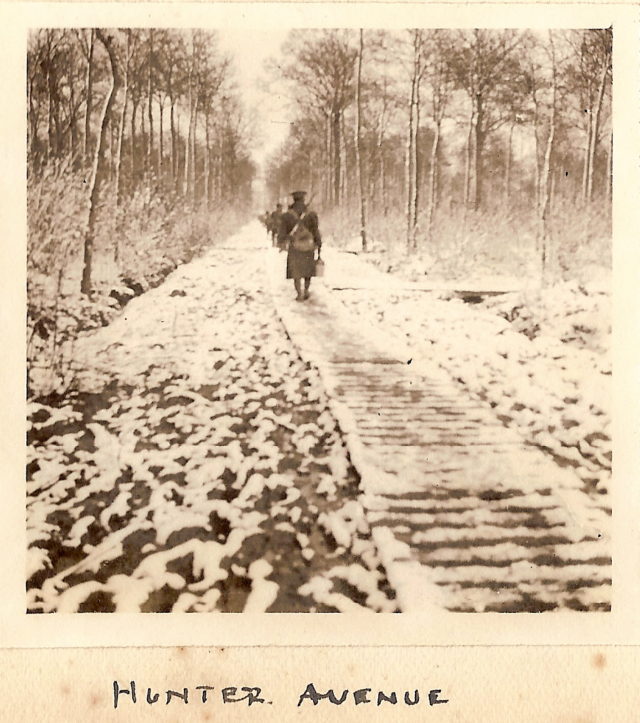
Capt Bennett’s images show conditions soldiers faced in the war (R.H.E. Bennett/PA)
His camera, nicknamed the Soldier’s Kodak, captured images of Capt Bennett with comrades as well as at his battalion’s makeshift headquarters in Ploegsteert Wood.
One poignant image depicts the grave of Capt Charles Carus Maud, a friend of Capt Bennett who was killed while fighting on December 19 1914.
Capt Maud’s body lay between the trenches until Christmas Day when German and British officers agreed they could retrieve their dead.
Photographs of his final resting place – now part of a Commonwealth War Graves Commission cemetery – are captioned “Maud’s Grave” in Capt Bennett’s scrapbook.
The scrapbook, along with Capt Bennett’s camera, were found by his family in the attic of his home in Otterton, Devon, decades after the war.

The images were found in a scrapbook at the war hero’s home in Devon (R.H.E Bennett/PA)
His son, Tony Bennett, 82, who himself served as a lieutenant colonel in the Somerset Light Infantry, said: “He went right at the beginning of war and he brought his camera with him.
“It was a Vest Pocket Kodak, quite a few of them were taken out by people in the Army. There are about 30 pictures or so in the scrapbook.
“He never talked about the war. I have so many questions I would like to have asked him.
“I don’t think I knew about the photographs before he died.”
Capt Bennett was commissioned into the Army in 1908 and joined the Somerset Light Infantry at Crownhill, Plymouth.
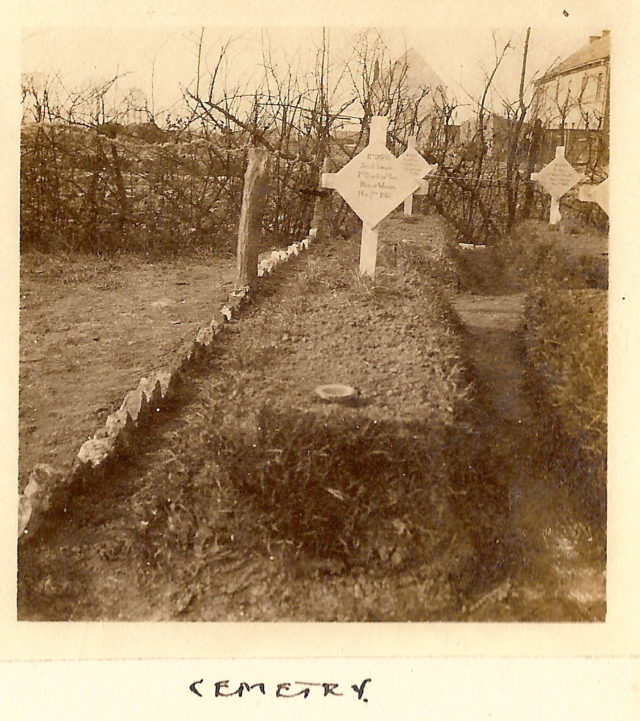
A cemetery photographed by Capt Bennett (R.H.E. Bennett/PA)
By 1914, he was serving as a machine gunner in the 1st Battalion and left for France on August 22.
He fought in the Battle of Mons and took up position in Ploegsteert Wood – known as Plugstreet Wood – in October, where he was appointed adjutant.
It was there that his friend Capt Maud, 39, was killed. Capt Maud’s body – along with 20 others – was recovered and buried on Christmas Day.
German soldiers handed Capt Maud’s body to his comrades, telling them he was a “very brave man”, war diaries show.
The battalion’s war diary detailed the Christmas truce.
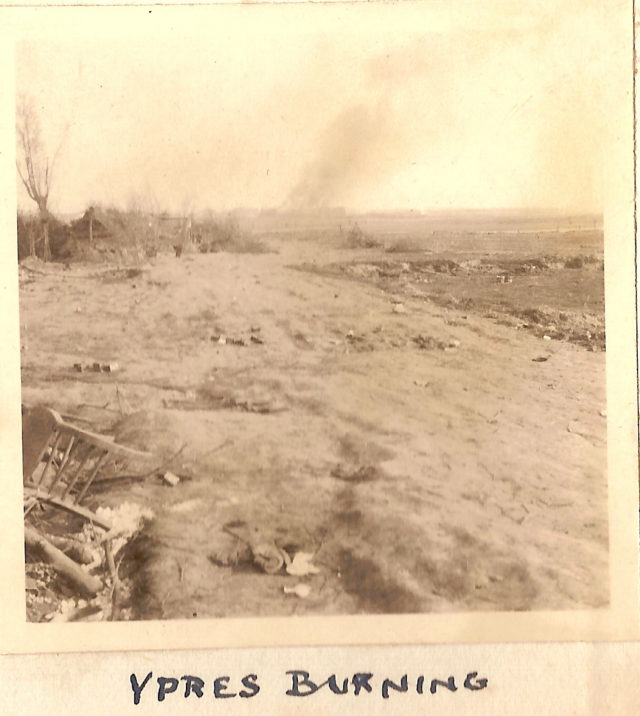
A photograph of Ypres, believed to have been taken in January 1915 (R.H.E. Bennett/PA)
“A truce was mutually arranged by the men in the trenches,” it read.
“During the morning Officers met the German Officers half way between the trenches and it was arranged that we should bring in our dead who were lying between the trenches.”
It continued: “Not a shot or a shell was fired by either side in our neighbourhood; and both sides walked about outside their trenches quite unconcernedly.”
Capt Bennett remained in Ploegsteert Wood until January 1915 and fought in the Second Battle of Ypres in April that year.
“He was awarded the Military Cross in June 1915 and was given four days to get back to Buckingham Palace,” Mr Bennett said.
“He was later invalided back. We don’t know exactly why – it may have been shell shock, I know he was gassed.”
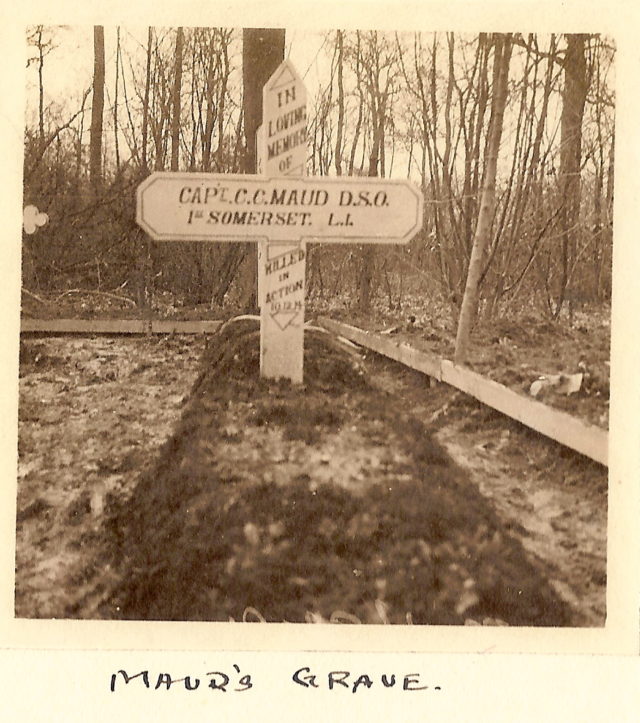
The grave of Capt Charles Carus Maud, as photographed by his comrade Capt Bennett (R.H.E. Bennett/PA)
Capt Bennett was also awarded the Croix de Guerre and twice mentioned in Despatches.
In 1917, he returned to the front line and became the brigade major of 57 Brigade the following year.
After the war, he continued to serve with the Somerset Light Infantry, retiring in 1937.
Two years later, he joined the Royal Air Force and was mentioned in Despatches in 1942 for his work in Bomber Command, where he was promoted to squadron leader.
He finally retired in 1947 and lived in the Devon village of Otterton until his death in 1970 at the age of 81. His wife, Marion Bennett – known as Mollie – died in 1982.
After their deaths, Mr Bennett and his wife Jane inherited their house. Their seven grandchildren have all been shown their great-grandfather’s scrapbook and told of his service.
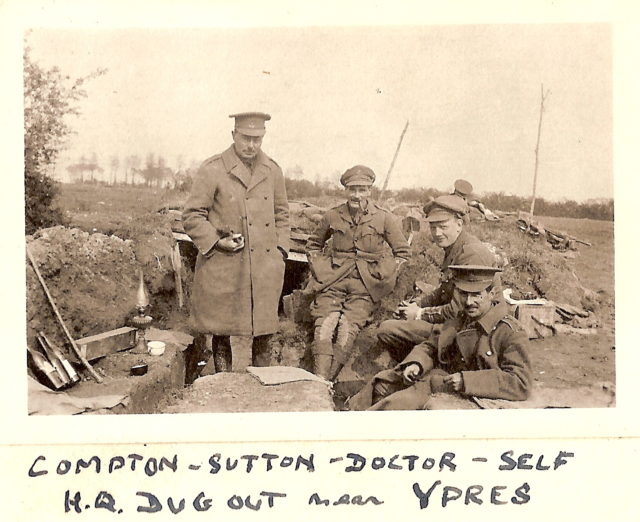
Capt Bennett and fellow soldiers in Ypres (R.H.E. Bennett/PA)
Earlier this year, Mr Bennett was one of thousands who took part in the Royal British Legion’s Great Pilgrimage.
This recreated a march 10 years after the First World War, in which 11,000 veterans and war widows visited the battlefields of the Somme and Ypres before marching to the Menin Gate.
“We should continue to remember because so many people gave their lives,” Mr Bennett said.
“When you go around the battlefields, one’s mind baffles to see what the soldiers had to endure. They did that for our country.”
Carole Arnold, the Legion’s community fundraiser for Devon, said: “The photographs provide a fascinating insight into what life in the trenches was like and the conditions the soldiers endured in the early days of the war.
“We all have a connection to the First World War and it’s amazing that links between the past and present such as this are still being discovered.”
The charity is asking the nation to say thank you to the First World War generation.
The Press Association
Latest posts by The Press Association (see all)
- 9 ways to look after your emotional health better in 2025 - January 7, 2025
- EastEnders fans to vote on storyline for the first time in 40th anniversary week - January 7, 2025
- Aldi beats rival Lidl as cheapest supermarket of 2024 - January 6, 2025
- All the benefits of lifting weights beyond bigger muscles - January 6, 2025
- The best ways to boost your immune system as cold temperatures hit - January 5, 2025








